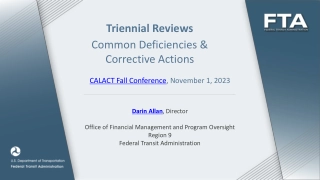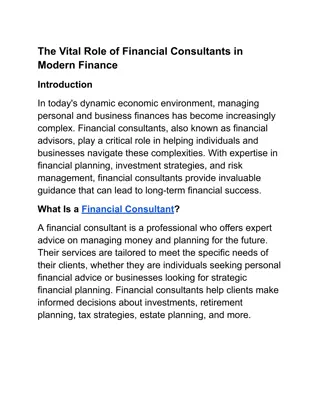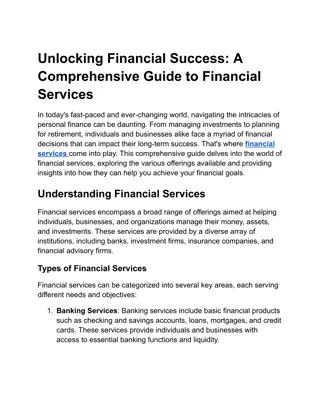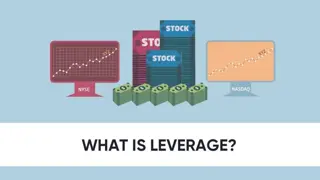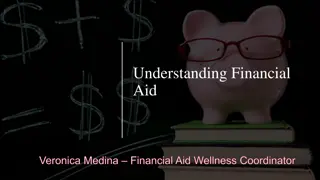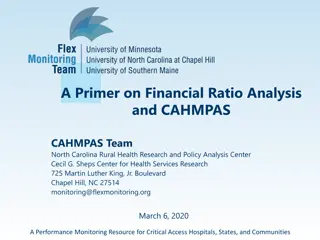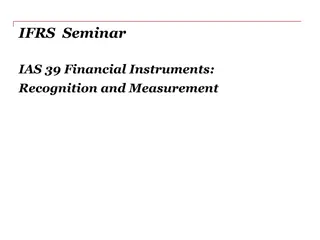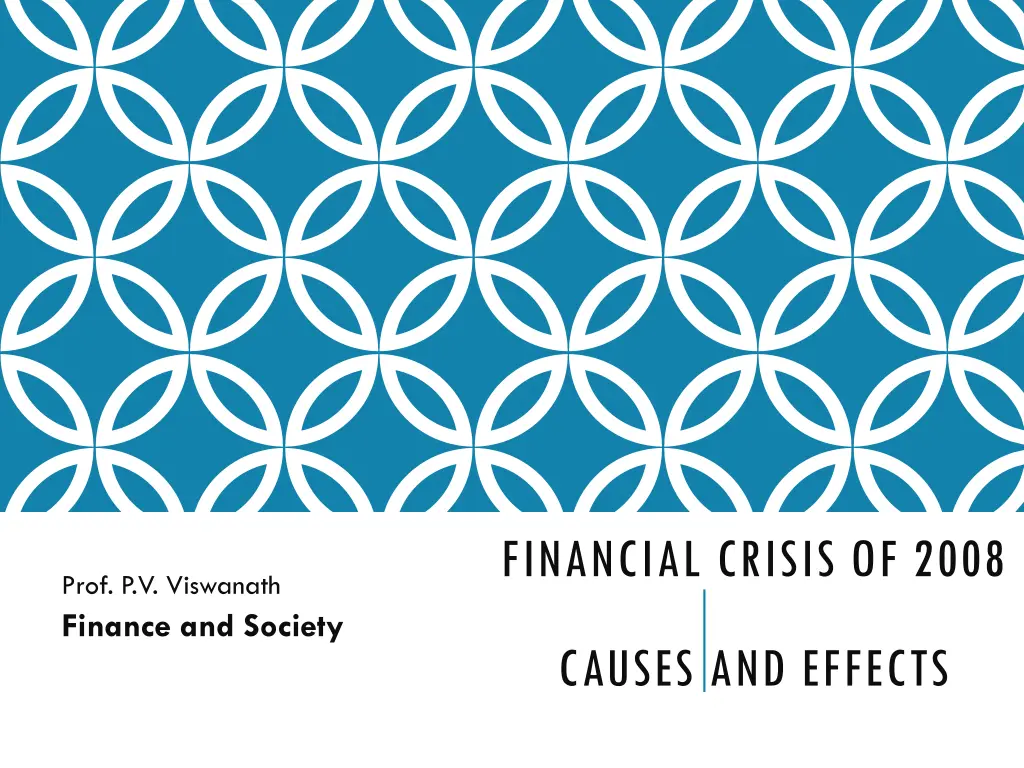
Causes and Effects of the 2008 Financial Crisis Explained
Explore the roots and impacts of the 2008 financial crisis, including the role of excess debt creation, misallocation of resources in the U.S. financial sector, and the use of special purpose vehicles. Learn about the proximate causes involving the asset and liability sides of bank balance sheets, leading to the crisis.
Download Presentation

Please find below an Image/Link to download the presentation.
The content on the website is provided AS IS for your information and personal use only. It may not be sold, licensed, or shared on other websites without obtaining consent from the author. If you encounter any issues during the download, it is possible that the publisher has removed the file from their server.
You are allowed to download the files provided on this website for personal or commercial use, subject to the condition that they are used lawfully. All files are the property of their respective owners.
The content on the website is provided AS IS for your information and personal use only. It may not be sold, licensed, or shared on other websites without obtaining consent from the author.
E N D
Presentation Transcript
FINANCIAL CRISIS OF 2008 Prof. P.V. Viswanath Finance and Society CAUSES AND EFFECTS
FINANCIAL CRISIS OF 2008 We will first discuss the roots of the crisis and its reasons. We will then look at its real impact on different sectors of the economy and society.
ROOTS OF THE CRISIS We can divide the explanation for the crisis into different parts. 1. The role of excess debt creation a. Demand Side b. Supply Side i. Lobbying ii. Innovation iii. Credit Rating Agencies 2. The role of banks a. Assets Side of bank balance sheets b. Liabilities side of bank balance sheets
PROXIMATE CAUSES OF THE 2008 CRISIS Excess Creation of Debt The U.S. financial sector misallocated resources to real estate, financed through the issuance of exotic new financial instruments. This was caused both by excess supply of debt fueled by innovation and excess demand for debt fueled by lack of financial literacy and fraud. The development of mortgage securitized instruments allowed foreign investors to hold mortgage loans with less worry. Banks issued mortgage loans, most of which were securitized and taken off bank balance sheets, either by sale to other entities or by using Specialized Investment Vehicles. Buoyed by rising real estate prices and taking advantage of the information asymmetry vis- -vis investors in securitized mortgages, banks performed less due diligence in issuing loans. Rating Agencies in a race to the bottom gave high ratings to mortgage securities.
SPECIAL PURPOSE VEHICLES (SIDE NOTE) These are also called Structured Investment Vehicles or Special Purpose Entities. It is a subsidiary created by a parent company to isolate financial risk, with a legal status as a separate company. This makes its obligations secure even if the parent company goes bankrupt. On the other hand, the assets and the liabilities of the SPE do not have to be shown on the balance sheet of the parent firm. Hence, a firm could be heavily leveraged in fact through its ownership of an SPE, yet not appear to be. To avoid classification of the SPE as a subsidiary (thereby forcing the entity to include the SPE s financial position and results of operations in its financial statements), FASB guidelines require that only 3% of the SPE be owned by an outside investor. Hence the SPE is effectively an (almost) fully owned subsidiary, yet its liabilities don t show up on the parent s books.
PROXIMATE CAUSES OF THE 2008 CRISIS Bank Balance Sheets: Assets Side A significant portion of these instruments found their way, directly or indirectly, into commercial and investment bank balance sheets, which held them because of their short-term orientation. Bank Balance Sheets: Liabilities Side These investments were largely financed with short-term debt. Shadow Banks In addition to commercial banks, there were shadow banks that did not have access to federal insured deposits and could not rely on the Federal Reserve as a lender of last resort. Lehman Brothers was such an institution. In summary: financial institutions made, bought, and sold mortgage securities they never examined, did not care to examine, or knew to be defective; firms depended on tens of billions of dollars of borrowing that had to be renewed each and every night, secured by subprime mortgage securities; major firms and investors blindly relied on credit rating agencies as their arbiters of risk.
EXCESS DEBT CREATION We can distinguish between push (supply) and pull (demand) factors that contributed to the creation of excessive debt.
DEMAND-SIDE PULL FOR MORE DEBT Investment banks and mortgage brokers have an incentive to push mortgage credit. High pressure salesmen manage to convince home-owners to take loans at high interest rates. There was also outright fraud by mortgage brokers who misrepresented the extent of indebtedness of home-owners. A Harvard University Professor, David Laibson shows that the low level of interest rates and high levels of liquidity encouraged homeowners to take excess levels of debt, most of which were used for consumption. As Zingales noted, If the most profitable line of business is to dupe investors with complex financial products, competitive pressure will induce financial firms to innovate along that dimension. Adjustable rate mortgages were a case in point, which led unwitting homeowners to take excessive credit. The development of mortgage securitized instruments allowed foreign investors who had less knowledge about individual mortgages to hold mortgage loans with less worry.
CREDIT STANDARDS RELAXATION Credit standards were relaxed to facilitate more and more borrowing by homeowners. In addition, borrowers portfolios became more and more risky because of the use of interest-only and adjustable rate mortgages.
EXCESS DEBT CREATION: SUPPLY SIDE A. RENT-SEEKING
RENT-SEEKING We can distinguish between two aspects of the excess supply of debt one, active lobbying by financial institutions to change laws reducing the cost and increasing the profitability of debt instruments; and two, active innovation in the development of different kinds of debt and debt derivative securities.
RENT-SEEKING: LOBBYING Rent-seeking and lobbying also created a legal environment that contributed to the growth in debt sector and in innovation leading to excess borrowing. Regulatory capital requirements are supposed to be countercyclical tight in up markets and loose in down markets. However, they rarely work in this fashion; in practice, banks escape stricter regulatory norms in good times through regulatory arbitrage, while in bad times, banks are held to higher market norms and so don t benefit from the relaxation. However, the too-large-to-fail philosophy did let large banks off the hook even in bad times.. The Federal Reserve failed to stem the flow of toxic mortgages, which it could have done by setting prudent mortgage-lending standards. The costs of systemic defaults are borne by society at large, i.e. there is market failure, and therefore external intervention by the regulatory system is necessary. However, the political economy of the financial system did not force banks to keep to lower debt-equity ratios.
LOBBYING FOR DEREGULATION The Glass-Steagall Act of 1932 separated commercial banking from investment banking, disallowed banks officials from taking loans from their own banks, and created the Federal Deposit Insurance Corporation. It was intended to protect depositors by preventing banks from engaging in risky activities. It also prohibited payment of interest on checking accounts. Banks wanted to not only sell mortgages to government sponsored enterprises (GSEs) such as Freddie Mac and Fannie Mae, but also to issue securitize and sell securities themselves, which was prohibited Glass- Steagall. Rubin, who was at Citigroup before and after serving as Treasury Secretary under Clinton, facilitated the passing of the Financial Services Modernization Act that repealed Glass-Steagall in 1999 by President Clinton. The repeal of Glass-Steagall consolidated investment and retail banks through financial holding companies, which were supposed to be subject to greater supervision. However, the revolving door between government and Wall Street prevented such supervision. Larry Summers who followed Rubin as Treasury Secretary after Rubin worked as a hedge fund managing director at D.E. Shaw. When Raghuram Rajan, U of Chicago academic tried to draw attention in 2005 to the increasing riskiness created by the financial intermediation, Larry Summers attacked him as unnecessarily attracting more regulations.
LOBBYING FOR DEREGULATION The Enron debacle of 2001, in addition to fraud by Enron, also involved excessive debt through the use of Special Purpose Vehicles in which banks were complicit. In late 2003, the Financial Accounting Standard Board issued a directive which required commercial banks to consolidate special purpose vehicles in which it was the main beneficiary. This would have required banks to provide more capital for SIVs (structured investment vehicles) and would have reduced the banks return to capital on the new securitizations. In 2004, the Office of the Comptroller of the Currency, the Federal Reserve Board, the Federal Deposit Insurance Corporation, and the Office of Thrift Supervision, declared asset-backed commercial paper conduits as being exempted from this directive. Instead, banks only had to hold a tenth of the capital for the SIVs compared to liabilities that they held in their own balance sheets. As a result, Citibank by the summer of 2007 was guaranteeing $92.7b in asset-backed commercial paper, enough to wipe out its core Tier 1 capital, such as equity, which was supposed to fund its business activities.
SUB-PRIME MORTGAGE ORIGINATION Credit rating agencies were paid by issuers, rather than by buyers of the securities. Competition between raters for issuer business led to a race-to-the-bottom. Kregel, Jan (2008) : Changes in the US financial system and the subprime crisis, Working Paper, No. 530, Levy Economics Institute of Bard College, Annandale-on-Hudson, NY
BAILOUT OF FINANCIAL INSTITUTIONS From https://money.cnn .com/news/speci als/storysupplem ent/bankbailout/ A list of banks bailed out to the tune of $204.8b by the Treasury Department through its Capital Purchase Program
EXCESS DEBT CREATION: SUPPLY SIDE B. INNOVATION
BASIC MORTGAGE BACKED PASS-THROUGH SECURITY The payments made by homeowners are simply passed through to the MBS holders. Dimitris Karapiperis, Financing Home Ownership: Origins and Evolution of Mortgage Securitization, Public Policy, Financial Innovations and Crises, Working Paper, Aug 2012, https://www.researchgate.net/
COLLATERALIZED MORTGAGE OBLIGATION The pre-payments from homeowners are first paid to Class A CMO holders, then to Class B, then to Class C. Class A securities have the shortest maturity. In this way, pre-payment risk can also be controlled. Dimitris Karapiperis, Financing Home Ownership: Origins and Evolution of Mortgage Securitization, Public Policy, Financial Innovations and Crises, Working Paper, Aug 2012, https://www.researchgate.net/
COLLATERALIZED DEBT SECURITIES CDOs are derivatives based on repackaged middle- ranking mezzanine tiers of other securitized mortgage deals. By combining them together and tranching, it is possible to make a large pool of BBB assets yield further tranches of AAA securities. One can then take the low-rated mezzanine slices of the CDO and pool and tranche them once more to create CDO-squared securities. A portion of these securities may then warrant an AAA rating. Creation of AAA-rated securities is further facilitated by the use of Credit Default Swaps (CDS).
CREDIT DEFAULT SWAPS https://thismatter.com/money/derivatives/credit-default- swaps.htm
EXCESS DEBT CREATION: SUPPLY SIDE C. CREDIT RATING AGENCIES
CREDIT RATING AGENCIES Credit rating agencies are meant to provide global investors with an informed analysis of the risk associated with debt securities. The riskiness of investing in these securities is determined by the likelihood that the debt issuer be it a corporation, bank-created entity, sovereign nation, or local government will fail to make timely interest payments on the debt. Ratings are usually characterized by a letter grade, the highest and safest being AAA, with lower grades moving to double and then single letters (AA or A) and down the alphabet from there. The ratings handed out by each of the Big Three (Standard and Poor s (S&P), Moody s, and Fitch Ratings) have widespread implications for investors and global markets. Together they control nearly 95 percent of the credit ratings market, in large part because their status was enshrined in the original 1975 Securities and Exchange Commission (SEC) regulations of the sector.
CREDIT RATING AGENCIES Credit Rating agencies have been criticized because it is the bond s issuer which pays the agencies for the initial rating of a security, as well as ongoing ratings. The public (and investors) can then access these ratings free of charge. Ratings agencies are charged with failing to take into account the potential for a decline in housing prices and its effect on loan defaults. The agencies inflated ratings also failed to account for the greater systemic risks associated with structured products, and they were accused of sacrificing quality ratings to win a bigger share of the lucrative sector. By 2006, Moody s had earned more revenue from structured finance $881 million than all its 2001 business revenues combined. https://www.cfr.org/backgrounder/credit-rating-controversy
CREDIT RATING AGENCIES Rating Agencies are also criticized for not having taken sufficient cognizance of tail risk, viz. the small likelihood of very large losses, such as would occur if an economy-wide event caused wide-spread defaults. The agencies, heretofore, had been accustomed to rating individual firms debt securities, whereas these structured debt products involved macro-risk as much as the micro risk of individual homeowners. Bank managers may not have had the right incentives to worry about low-probability risks because of the virtual impossibility of writing contracts that provide for ex-post settling-up.
BANK BALANCE SHEETS: ASSETS SIDE The role of Short-Termism Shareholders are short-sighted because they have various psychological biases. There is evidence that investors are influenced by the media. They tend to buy, rather than sell, stocks when those stocks are in the news. This attention-based buying can lead investors to trade too speculatively. They tend to sell winning investments while holding on to their losing investments. In short, they have short attention spans. (Brad M. Barbera and Terrance Odean, The Behavior of Individual Investors.) Stock- and option-based compensation contracts designed to align managerial incentives with shareholders provide managers incentives to pursue short-term profits. As a result, even when bank managers knew that mortgage securities were overvalued, they tended to hold them in their portfolios because they were less likely to default in the short run.
SHORT-TERMISM Shleifer and Vishny (1990) point out that arbitrage in long- term assets is more expensive because such assets can remain mispriced for longer; hence, in equilibrium, they will be more mispriced than short-term assets. According to Narayanan (1985), managers are interested in having their managerial talent recognized so that they can be properly compensated. Information vindicating managerial decisions to adopt long- term projects can take a longer time and because as Shleifer and Vishny (1990) point out, long-term assets can stay mispriced longer. This raises the cost to the manager and making it rational for him/her to be short-term oriented. Palley (1997) also points out that managerial turnover implies that the manager may not be around to obtain the benefits of good long-term project selection; s/he therefore has an incentive to choose short-term projects.
SHORT-TERMISM If there are noise traders in the market, mispriced assets can see the degree of mispricing increase before it decreases. Under these circumstances, if arbitrageurs have to liquidate their positions for any reason (such as imperfections in the market for loans, limited arbitrageur wealth to use as collateral, asymmetric information between the arbitrageur and his lenders), they might actually see a loss in their arbitrage positions, even if they are ultimately proved correct. Hence the presence of mispriced long-term assets becomes worse when there are more uninformed noise traders. Hence the greater democratization of finance may have contributed to the short-termism of corporate and bank managers.
RETAIL FUNDING STRATEGY Traditionally, most banks had funded their operations through what is known as "retail" banking, in which consumers lend money to banks in the form of deposits, which banks use to make loans. Beginning in the 1980s, however, banks across the world increasingly moved toward "wholesale" banking, funding their operations through large, short-term loans from other financial institutions, such as other banks and money market funds. The motive for this shift was profit and competitive survival. Wholesale funding gave banks the ability to borrow much larger sums of money than they could in the retail market, allowing them to become more leveraged -- and thus more exposed to risk--than ever before. (From The Forgotten History of the Financial Crisis What the World Should Have Learned in 2008 By: Tooze, Adam, Foreign Affairs, Vol. 97, Issue 5)
ASSET-BACKED COMMERCIAL PAPER https://www.law.berkeley.edu/files/bclbe/CP_During_the_Crisis.pdf
COMMERCIAL PAPER ISSUANCE https://files.stlouisfed.org/files/htdocs/publicat ions/review/09/11/Anderson.pdf
FINANCIAL EFFECTS TO REAL EFFECTS The growth of the shadow banking sector and the interdependence of the institutions in the shadow banking sector (such as mutual funds and structured investment vehicles that hold loans and asset-backed securities while being funded with short-term asset-backed commercial paper) then ensured a collapse of the financial sector, and thereby the real sector. The collapse occurred because banks (which were insured by the FDIC only to a limited extent) and shadow-banking institutions had to sell assets and to call in loans made to other financial institutions to offset the reduction in cashflow from defaulting mortgage loans. The interconnectedness of these institutions led to a general collapse of the entire financial sector instead of just one bank. Of course, credit to existing projects was stopped and no new credit was provided to new projects, which led to employees being laid off and investors losing money.
FINANCIAL EFFECTS TO REAL EFFECTS At some point, the real estate market overheated and home prices stopped going up. Adjustable rate mortgages after 2 or 3 years raised interest rates. Since borrowers were overextended to begin with, these shocks caused them to default. Institutions such as Lehmann and banks such as WAMU made bad bets by relying on short-term funding and investing in risky loans. When home-owner defaults happened, short-term borrowing rates rose. As a result, these institutions themselves started defaulting because they owed more money than the market value of its assets. They went bankrupt. Lehman and other non-banking institutions were not bailed out by the Fed and even WAMU was in a difficult situation. They had to sell assets, both real (real estate) and financial (CMOs and others). These sales depressed the market value of both real and financial assets. Financial assets, even more than real assets, (especially assets that are not directly linked to real assets) derive their value from expectations regarding future cashflows and expectations regarding the level of economic activity. The dumping of financial assets and their reduced market level leads to a downward re-evaluation of expectations regarding future economic activity.
FINANCIAL EFFECTS TO REAL EFFECTS This reduction in market value of financial assets, in turn, causes other financial institutions both because of exposure to the defaulting institutions and because of holding these financial assets to also have a surplus of liabilities over assets. This requires them to further dump financial (and real) assets since they cannot finance them cheaply any more. The original default thus triggers a chain of defaults. The remaining, now weakened, financial institutions cannot finance real activity for two reasons one, they have less financial capacity; and, two, they are more risk averse. The reduced real economic activity (because of reduced financing) thus leads to a further reduced demand for financing. Thus, the economy settles into an equilibrium with a lower level of economic activity, a lower level of employment and lower household incomes and wealth. See Murillo Campello, John R. Graham, and Campbell R. Harvey, The Real Effects of Financial Constraints: Evidence from a Financial Crisis, Journal of Financial Economics 97 (2010): 476.
INCREASING NON-FINANCIAL BORROWING McKinsey Global Institute Report on growing household, government and non-financial debt.
INCREASING DEREGULATION Since 2008, Republicans in Congress have eliminated some of the financial regulations that were put in place after the crisis. They have reduced capital requirements for all but the very biggest banks. They have also sought to weaken the Volcker Rule, which bars any bank from speculating in the markets on its own account.
HOW THE GREAT RECESSION CHANGED AMERICAN WORKERS According to According to Peter Cappelli, Iwan Barankay and David Lewin Sep 10, 2018 https://knowledge.wharton.upenn.edu/article/great- recession-american-dream/
IMPACT ON WORKERS One in five employees lost their jobs at the beginning of the Great Recession. Many of those people never got real work again. There was a spike in disability claims was in part caused by the difficulty laid-off people had in securing any jobs. A generation of young people entering the job market had their careers disrupted by it. As a result, this age group continues to delay buying houses, having children, and other markers of stable, adult life. This was a permanent shock for these workers, as opposed to investors of capital in these sectors, who recovered.
LONG-TERM RETIREMENT EFFECTS Those workers who kept their jobs or found new ones following the crisis are now facing the prospect of needing to delay retirement while having a much smaller nest egg to rely on. Investments in the future are likely to have lower expected returns compared to the past because of the recession s effect on real activity. That will influence work, retirement, saving and the investment behavior of older Americans. As a result, workers are likely to build up less wealth in their tax-qualified 401(k) accounts compared to the past. They will claim Social Security benefits later and work more.
DEBT BURDEN IN RETIREMENT Because of the excessive debt taken on before 2007, Americans are more likely to enter retirement in debt than ever before, and higher debt levels make older households quite sensitive to rising interest rates. Retirees may need to devote a growing fraction of their incomes to servicing the rising debt. Older people will have to learn to manage assets and liabilities wisely, and to pay off some of this higher- interest debt. These challenges are exacerbated by older persons unwillingness to sell their homes, move to smaller homes, or engage in reverse mortgages. Financial Education will be needed even for older people.
HOME-OWNERSHIP RATES Home ownership rates dropped after the recession, though they have risen after 2016. Home ownership has been considered desirable, in general, but it may be worthwhile revisiting the question. Is it better for individuals to be homeowners? Is it desirable for homeownership to be tied to education, to creditworthiness and a host of other things? Is it desirable from a portfolio point of view?
HOME-OWNERSHIP RATES BY RACE After the crisis, minority groups were hit harder by tightening lending standards, she adds, because minorities disproportionately have lower wealth and lower credit scores.
IMPACT ON REAL WAGES A fundamental principle that commonly governs our understanding of recoveries and steers monetary policy is the Phillips Curve, which says that there is an inverse relationship between changes in inflation and changes in unemployment. However, since the end of the recession, as unemployment has dropped all the way down to the lowest level since the 1970s, wages in the U.S. have barely risen in real terms. That is also true, on average, in Europe and Japan. Is this because of a structural change in the economy with the nature of jobs changing? Do we want free labor markets? Do we want to treat labor as simply a commodity?
THE DECLINE OF UNIONS One possible explanation is the diminished power of unions. Some studies point out that France saw higher wage increases, but lower growth, than Germany for that reason. But this, in itself, does not explain the persistently low wage-growth since unions were also weak after the previous recession the dot-com bubble after which wages rose again. It is necessary to look deeper into what a recession does to the internal organization of firms and their decision processes. The shedding of managers along with workers in 2008- 2009 a key difference compared to previous recessions, when fewer upper-tier jobs were lost may have concentrated decision-making power inside firms.
IMPACT ON TRUST IN MARKETS The Depression led to a kind of delegitimization of free-market capitalism. As a result, in the U.S. and around the globe, there was a growth of regulation because there was a sense that free markets on their own didn t deliver stable growth. However, as noted befor, this was not consistent. The Depression also followed 60 or 70 years of crisis and volatile markets. There is greater cynicism about big business on behalf of the public, and probably nervousness about the stability of capital markets. There may be a pressing need for more government regulation, but even more pervasive is a much more corrosive sense that the system is broken, without any constructive suggestions about what to do about it. Does labor have as much political power as it had after the Depression? Or does capital? If the latter, we may not see a change in how the economy is structured notwithstanding the uncertainty.



